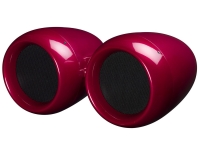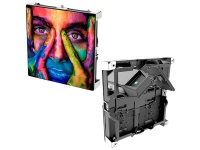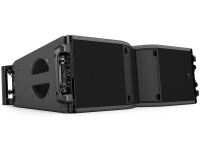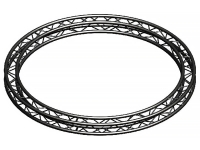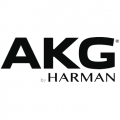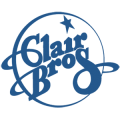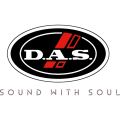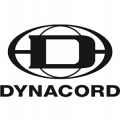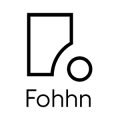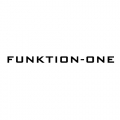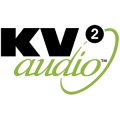ABOUT THE PRODUCT
ABOUT THE MANUFACTURER
GLOSSARY
A-16D
A-Net Distributor
Aviom?s A-Net Distributors, the A-16D and A-16D Pro, provide support for parallel connections of multiple Pro16 devices, including the A360, A-16II and A-16R Personal Mixers. Each accepts one A-Net input and provides eight identical A-Net outputs using standard Cat-5e cables.
The 2U A-16D Pro is powered by an internal switching power supply, with a detachable power cord and IEC power inlet on the rear panel. Isolated (floating ground) DC power is supplied to eight A-Net outputs for providing remote power via Cat-5e to Pro16 Personal Mixers.
A single unpowered A-Net Thru is provided for daisy-chaining additional A-Net Distributors or other Pro16 devices, such as the AN-16/o v.4 Output Module. All network connections on the A-16D Pro use heavy duty locking Neutrik EtherCon connectors.
Inside the A-16D Pro is Aviom?s unique power sub-system, which virtually eliminates the possibility of introducing hum or ground loops into an audio system. alternatively, the half-rack space A-16D is powered by an external DC power supply and provides remote power over A-Net on a per-jack basis, using optional external PS-120 DC power supplies.
A-Net network connections use standard RJ45 jacks. The A-16D is a cost-effective method for distributing A-Net and power to Personal Mixers, providing redundant cable runs to back-up modules, or refreshing an A-Net signal where cable runs exceed 500ft/150m.
An unlimited number of Distributors can be used in an A-Net network.
Architectural Specifications
The Aviom A-16D Pro shall employ the Aviom A-Net Pro16 audio transmission protocol to provide one channel of A-Net input and eight channels of A-Net data distribution for devices connected in an A-Net network. It shall digitally transmit full-bandwidth, high-quality audio by employing the Aviom A-Net Pro16 audio transmission protocol.
Front panel connectors shall be of the EtherCon RJ45 type. LED indicators for power and A-Net shall be provided.
The unit shall be powered from an internal universal power supply (110 to 240 VAC). It shall provide DC power to the eight A-Net Out jacks to power Pro16 Personal Mixer products. It shall be UL and CE listed. Rear panel features shall include an AC power receptacle with fuse and a detachable AC cable. The front panel shall include an AC power switch.
Its dimensions shall be 19 inches wide, 14.25 inches deep, and 2U (3.5 inches) high. Its net weight shall be 12 pounds, and its steel chassis shall be finished in blue. The unit shall be Aviom, Inc. model A-16D Pro A-Net Distributor.
Features
- One A-Net input, eight A-Net outputs
- Distributes power and audio on the same cables
- One passive A-Net Thru
- Heavy-duty EtherCon connectors
- Eight isolated internal power supplies
- Standard IEC power connector
A-16II
Personal Mixer
The A-16II Personal Mixer is the industry standard solution for delivering high quality monitoring control directly to performers on stage and in the studio. Each A-16II Personal Mixer provides independent mix control of sixteen channels, including channel volume, pan/stereo spread, and grouping, as well as master volume and tone controls. Additionally, each Personal Mixer can store and recall up to sixteen independent custom mix snapshots.
Individual channels, stereo pairs, and channel groups can be soloed or muted. The Global Trim function can be used to decrease every channel?s volume 6dB, providing additional headroom for mixing a selected channel.
The TRS audio output from the A-16II can be connected to a range of devices, including wired in-ear monitors (IEMs), transmitters for wireless IEMs, headphones, powered monitors, and power amps. The A-16II features unique high voltage and high current output circuitry which auto-detects stereo and mono connections.
Audio is delivered to the A-16II from a Pro16 input module or console card over a single Cat-5e cable, using Aviom?s ultra-fast A-Net Pro16 technology. A-Net provides plug-and-play operation, long cable runs (up to 500ft/150m between devices), and sub-millisecond transmission of 24-bit digital audio.
Power can be supplied to the A-16II through an optional external DC power supply or over the Cat-5e cable, using an A-16D or A-16D Pro A-Net Distributor. Personal Mixers can be daisy-chained (with external DC power supplied locally) or connected in parallel using an A-Net Distributor.
A-16II Personal Mixers can be used in virtually any combination with other Pro16 devices, including the rack-mounted version of the Personal Mixer, the A-16R, and the A360.
Architectural Specifications
The Aviom A-16II Personal Mixer shall provide stereo mixing of sixteen channels of audio transmitted via an A-Net network over Cat-5e UTP cable. It shall provide full-bandwidth audio by employing the Aviom A-Net Pro16 audio transmission protocol. It shall employ 24-bit D/A converters with a 44.1/48kHz sample rate.
It shall have a frequency response from 4Hz to 22kHz, +0/-0.2dB or better, with total harmonic distortion no more than 0.003% at 1kHz with a +4dBu input signal. Maximum level (RMS) shall be 1.0 watt at 100 ohms. The audio output shall be capable of being connected to headphones or line-level audio sources. Output impedance shall be 32 ohms.
Front panel features shall include master volume, treble and bass controls, LED indicators for Channel Volume and Pan, lighted channel-select buttons, mute and solo functions. A front-panel A-Net Active LED shall be provided. The unit shall be capable of storing sixteen mixes as presets in internal memory.
Rear panel features shall include a detachable DC power cord. The unit shall be powered from an external universal power supply (input voltage 100 to 240 VAC; output voltage 18-24 VDC, 0.5 amps). It shall be UL and CE listed.
The rear panel shall have RJ45 connectors for A-Net digital signal input and output. It shall employ a ?? TRS jack for headphone/line-level output.
Its dimensions shall be 10.75 inches wide, 5.6 inches deep, and 2.25 inches high. Its net weight shall be 3.4 pounds, and it shall be finished in blue. The unit shall be Aviom, Inc. model A-16II.
Features
- Provides stereo mix control of sixteen audio channels
- Sixteen channel-select buttons with select and Mute LEDs
- Channel Volume control with LED readout
- Channel Pan/Spread control with LED readout
- Dedicated Recall, Group, Solo, and Mute buttons
- Sixteen user Preset memory locations
- Master Volume, Treble, and Bass controls
- Tabletop or mic-stand mountable (using optional MT-1a mic stand bracket)
Professional used lighting equipment.| Professional second hand lighting equipment.| Professional pre owned lighting equipment.
Professional used audio equipment.| Professional second hand audio equipment.| Professional pre owned audio equipment.
Second hand audio gear. | Second hand lighting.
Pro audio equipment, second hand amplifiers, DJ, second hand sound systems, second hand Microphones, second hand Media Players.
Outdoor & Indoor LED screens for sale, LED mobile truck.
Light trussing, Gebrauchte Veranstaltungstechnik, used stage equipment Stage & Theatre lighting products.
Used Aviom
Aviom is a pro audio equipment manufacturer of personal monitoring systems. Headquartered in West Chester, Pennsylvania, Aviom produces distributed audio networking gear which uses a proprietary digital audio transport system called A-Net, based on the physical layer of Ethernet and carried over Category 5 cables terminated with 8P8C connectors.
Aviom's Pro16 Monitor Mixing System was nominated in 2005 for a TEC Award,and in 2008 the Pro64 Series won the best Sound System Technology at Musik Messe in Frankfurt, Germany. Aviom's products are used in live sound, broadcast, recording studios, houses of worship, theaters, schools, and post-production facilities worldwide.
Applications include interfacing with stage monitoring, headphone monitoring, and in-ear monitoring. House-of-worship engineer Brad Herring wrote that, of the several CAT-5e-based personal monitoring systems entering the marketplace, "perhaps the most notable is the Aviom system."All Aviom products are designed and manufactured in the United States.
Professional used lighting equipment.| Professional second hand lighting equipment.| Professional pre owned lighting equipment.
Professional used audio equipment.| Professional second hand audio equipment.| Professional pre owned audio equipment.
Second hand audio gear. | Second hand lighting.
Pro audio equipment, second hand amplifiers, DJ, second hand sound systems, second hand Microphones, second hand Media Players.
Outdoor & Indoor LED screens for sale, LED mobile truck.
Light trussing, Gebrauchte Veranstaltungstechnik, used stage equipment Stage & Theatre lighting products.
Active: Powered. An active crossover is electrically powered and divides the line-level signal prior to amplification. An active speaker includes an active crossover and built-in amplifier.
Actuality: Audio from an announcer speaking.
Amplifier: A component that increases the gain or level of an audio signal.
Balanced Input: A connection with three conductors: two identical signal conductors that are 180 degrees out of phase with each other, and one ground. This type of connection is very resistant to line noise.
Bandpass: A two-part filter that cuts both higher and lower frequencies around a center band. A bandpass enclosure cuts high frequencies by acoustic cancellation and low frequencies by natural physical limitations on bass response.
Bandwidth: In audio, the range of frequencies a device operates within. In video, the range of frequencies passed from the input to the output. Bandwidth can also refer to the transmission capacity of an electronic communications device or system the speed of data transfer,is very important when planning a meeting for the attendees to stay connected.
Bass: Low frequencies; those below approximately 200 Hz.
Bi-Wiring: A method of connecting an amplifier or receiver to a speaker in which separate wires are run between the amp and the woofer and the amp and the tweeter.
Boost: To increase, make louder or brighter; opposite of attenuate.
Bridging: Combining two channels of an amplifier to make one channel that more powerful. One channel amplifies the positive portion of an audio signal and the other channel amplifies the negative portion, which are then combined at the output.
CD: Compact Disc. Ubiquitous digital audio format. Uses 16-bit/44.1-kHz sampling rate PCM digital signal to encode roughly 74 or 80 minutes of two- channel, full-range audio onto a 5-inch disc.
CD-R: Recordable Compact Disc.
CD-RW: Rewritable Compact Disc.
Channel: In components and systems, a channel is a separate signal path. A four-channel amplifier has at least four separate inputs and four separate outputs.
Coloration: Any change in the character of sound (such as an overemphasis on certain tones) that reduces naturalness.
Crossover: A component that divides an audio signal into two or more ranges by frequency, sending, for example, low frequencies to one output and high frequencies to another. An active crossover is powered and divides the line-level audio signal prior to amplification. A passive crossover uses no external power supply and may be used either at line level or, more commonly, at speaker level to divide the signal after amplification and send the low frequencies to the woofer and the high frequencies to the tweeter.
Crossover Frequency: The frequency at which an audio signal is divided. 80 Hz is a typical subwoofer crossover point and is the recommended crossover point in theatrical and home THX systems. Frequencies below 80 Hz are sent to the subwoofer signals above 80 Hz are sent to the main speakers.
Cut: To reduce, lower; opposite of boost.
Decibel (dB): A logarithmic measurement unit that describes a sound`s relative loudness, though it can also be used to describe the relative difference between two power levels. A decibel is one tenth of a Bel. In sound, decibels generally measure a scale from 0 (the threshold of hearing) to 120-140 dB (the threshold of pain). A 3dB difference equates to a doubling of power. A 10dB difference is required to double the subjective volume. A 1dB difference over a broad frequency range is noticeable to most people, while a 0.2dB difference can affect the subjective impression of a sound.
Delay: The time difference between a sonic event and its perception at the listening position (sound traveling through space is delayed according to the distance it travels). People perceive spaciousness by the delay between the arrival of direct and reflected sound (larger spaces cause longer delays.
Diaphragm: The part of a dynamic loudspeaker attached to the voice coil that produces sound. It usually has the shape of a cone or dome.
Diffusion: In audio, the scattering of sound waves, reducing the sense of localization. In video, the scattering of light waves, reducing hot spotting, as in a diffusion screen.
Digital Audio Server: Essentially a hard drive, a digital audio server stores compressed audio files (like MP3 or WMA). Most include the processing to make the files, and all have the ability to play them back.
Direct-Stream Digital: A format for encoding high-resolution audio signals. It uses a 1-bit encoder with a sampling rate of 2,822,400 samples per second (verses 44,100 for CD). Used to encode six high-resolution channels on SACD.
Dispersion: The spread of sound over a wide area.
Distortion: Any undesired change in an audio signal between input and the output.
DNR: Dynamic Noise Reduction. A signal-processing circuit that attempts to reduce the level of high-frequency noise. Unlike Dolby NR, DNR doesn’t require preprocessing during recording.
Dolby B: A noise-reduction system that increases the level of high frequencies during recording and decreases them during playback.
Dolby C: An improvement on Dolby B that provides about twice as much noise reduction.
Dolby Digital: An encoding system that digitally compresses up to 5.1 discrete channels of audio (left front, center, right front, left surround, right surround, and LFE) into a single bitstream, which can be recorded onto a DVD, HDTV broadcast, or other form of digital media. When RF-modulated, it was included on some laser discs, which requires an RF-demodulator before the signal can be decoded. Five channels are full-range; the .1 channel is a band-limited LFE track. A Dolby Digital processor (found in most new receivers, preamps, and some DVD players) can decode this signal back into the 5.1 separate channels. Most films since 1992`s Batman Returns have been recorded in a 5.1 digital format, though a number of films before that had 6-channel analog tracks that have been remastered into 5.1.
Dolby EX: An enhancement to Dolby Digital that adds a surround back channel to 5.1 soundtracks. The sixth channel is matrixed from the left and right surround channels. Often referred to as 6.1. Sometimes referred to as 7.1 if the system uses two surround back speakers, even though both speakers reproduce the same signal. Software is backwards-compatible with 5.1 systems, but requires an EX or 6.1 processor to obtain additional benefit.
Dolby Pro Logic: An enhancement of the Dolby Surround decoding process. Pro Logic decoders derive left, center, right, and a mono surround channel from two-channel Dolby Surround encoded material via matrix techniques.
Dolby Pro Logic II: An enhanced version of Pro Logic. Adds improved decoding for two-channel, non-encoded soundtracks and music.
Driver: A speaker without an enclosure; also refers to the active element of a speaker system that creates compressions and rarefactions in the air.
DSP: Digital Signal Processing. Manipulating an audio signal digitally to create various possible effects at the output. Often refers to artificially generated surround effects derived from and applied to two-channel sources.
DTS: Digital Theater Systems. A digital sound recording format, originally developed for theatrical film soundtracks, starting with Jurassic Park. Records 5.1 discrete channels of audio onto a handful of laser discs, CDs, and DVDs. Requires a player with DTS output connected to a DTS processor.
DTS ES: An enhanced version of the 5.1 DTS system. Like Dolby’s Surround EX, a sixth channel is added. In some cases (DTS ES Discrete), the sixth channel is discrete. Software is backwards-compatible with 5.1 systems, but requires an ES or 6.1 processor to obtain additional benefit. Neo: 6 is a subset of DTS ES that creates 6.1 from material with fewer original channels.
Dynamic Range: The difference between the lowest and the highest levels; in audio, it’s often expressed in decibels. In video, it’s listed as the contrast ratio.
Professional used lighting equipment.| Professional second hand lighting equipment.| Professional pre owned lighting equipment.
Professional used audio equipment.| Professional second hand audio equipment.| Professional pre owned audio equipment.
Second hand audio gear. | Second hand lighting.
Pro audio equipment, second hand amplifiers, DJ, second hand sound systems, second hand Microphones, second hand Media Players.
Outdoor & Indoor LED screens for sale, LED mobile truck.
Light trussing, Gebrauchte Veranstaltungstechnik, used stage equipment Stage & Theatre lighting products.

